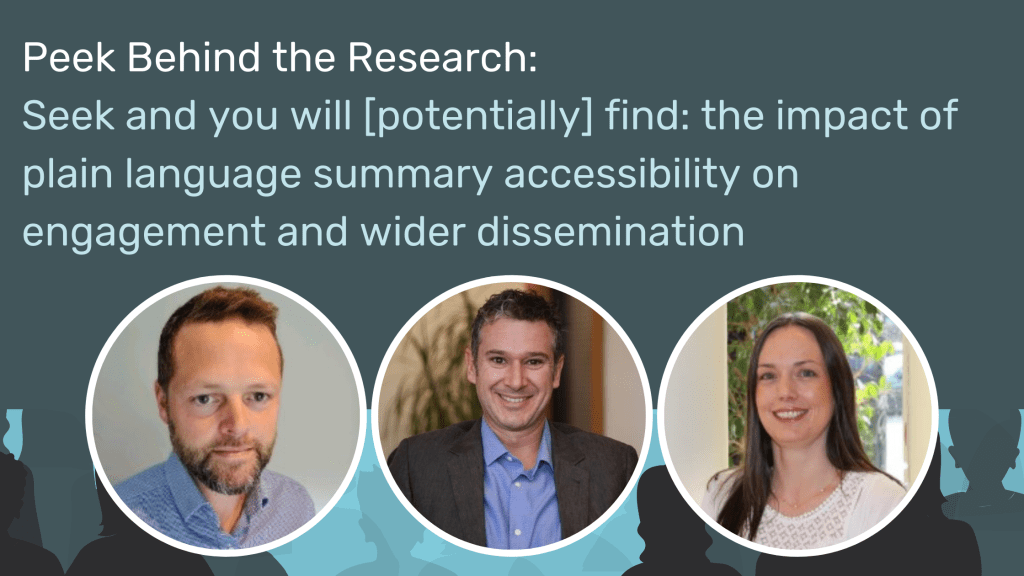- Written by Joanne Walker
Peek Behind the Research: Seek and you will [potentially] find: the impact of plain language summary accessibility on engagement and wider dissemination
In our latest ‘Peek Behind the Research’ interview from the 2022 European Meeting of the International Society for Medical Publication Professionals (ISMPP), we speak with Simon Foulcer, David Sheppard and Nichola Gokool of Parexel International about their research ‘Seek and you will [potentially] find: the impact of plain language summary accessibility on engagement and wider dissemination‘.
Read our interview in full below or access the poster here.
ISMPP-EU-2022-Seek-and-you-will-potentially-find….
Source: ‘Seek and you will [potentially] find: the impact of plain language summary accessibility on engagement and wider dissemination‘ originally presented at the 2022 European Meeting of ISMPP, January 2022.

Why did you carry out this research?
The value of publishing plain language summaries (PLS) alongside a manuscript is now well recognized and there is an increasing trend among journals to not only accept, but to actively encourage PLS submissions. In the last few years, there has been considerable focus on recommendations and toolkits for the development of PLS. While these toolkits are important, there is significant heterogeneity in how PLS are made accessible to the reader.
The impact of differences in journal approach to accessibility on PLS engagement has not been investigated. The objective of our research was to assess the impact of PLS accessibility on wider dissemination and sharing.
What were the main findings?
We analysed several journals publishing PLS alongside manuscripts. These journals took different approaches to making these PLS available, such as publishing on a stand-alone platform, creating a dedicated page on the journal website, and embedding within the article itself. We designed the study to identify who was accessing the content and how they were sharing it.
Our results demonstrated that patients and patient representatives were more likely to access the PLS if they were freely accessible and clearly sign-posted on the journals website. Journals using a dedicated website for PLS saw the largest levels of patient engagement; over 20% of PLS article shares were by patients or patient representatives. Perhaps unsurprisingly, we were unable to identify any shares by patients when the PLS was published as part of the article and behind a paywall.
Were you surprised by any of the results?
Yes, the main surprise was the connection between improved journal accessibility of PLS and greater sharing on social media by patients or patient advocates. This highlights the critical role journals can play in ensuring PLS are easily accessible and can readily be shared by patients.
Are you looking to continue this research further?
Yes, we are looking to expand the number of therapy areas analysed to identify any specific trends or requirements for enhancing PLS accessibility.
Finally, what are your thoughts on the future of PLS and their place in medical/scientific research?
PLS are essential to communicate medical/scientific research to lay audiences and should be considered as a mandatory element of all publications. Further work is needed to ensure PLS can be easily found and accessed by the intended audiences and disseminated more widely to patients and patient advocates.
Acknowledgements: The research was funded by Parexel.
